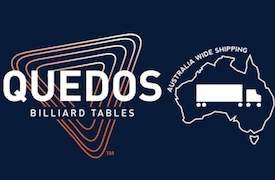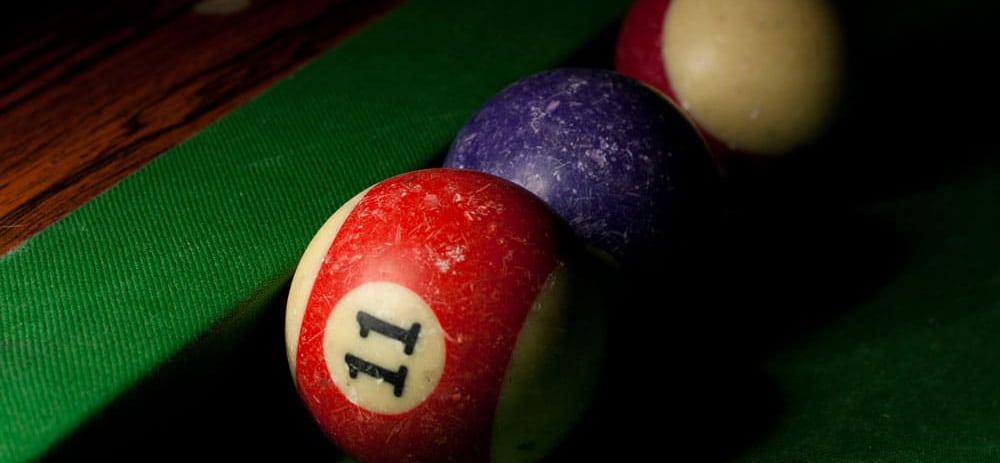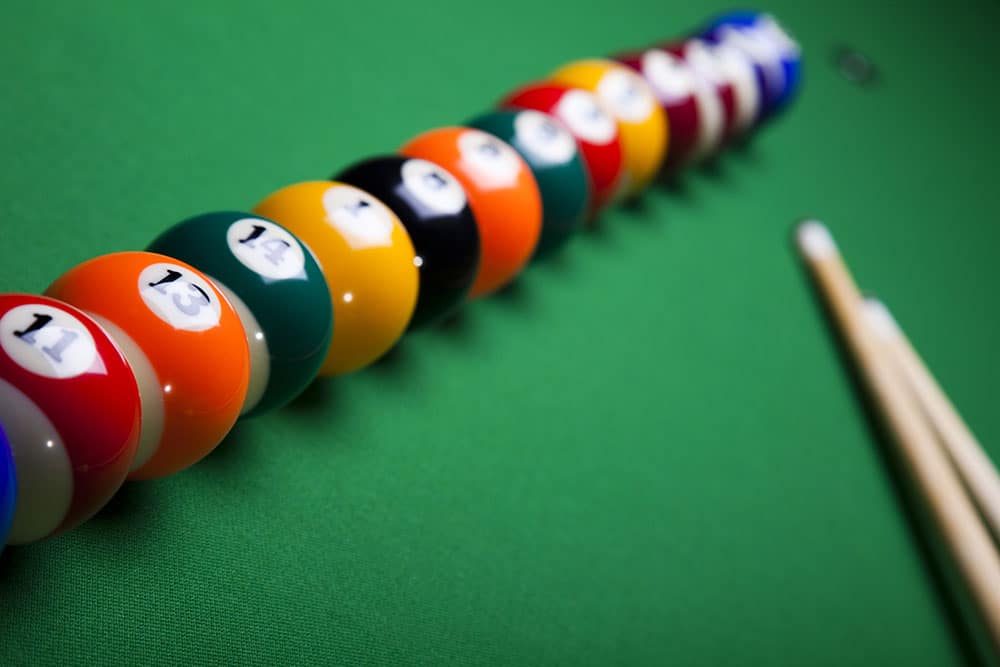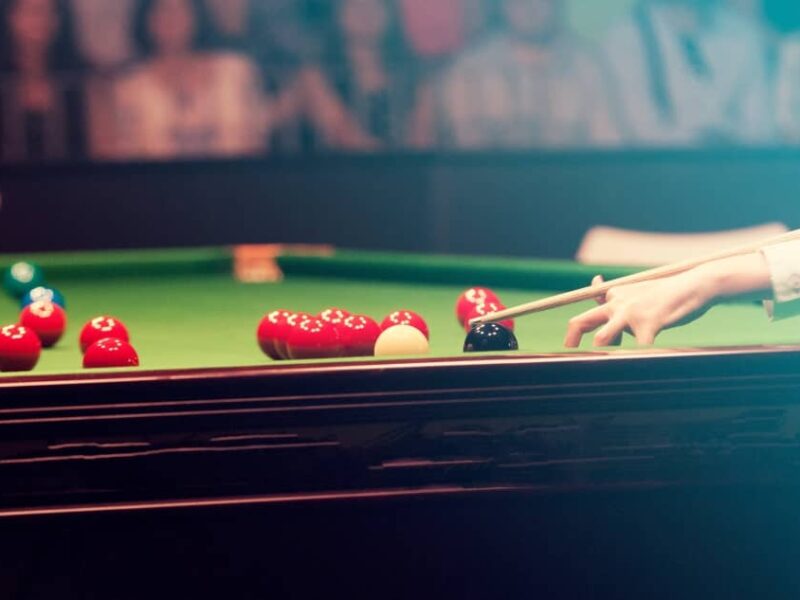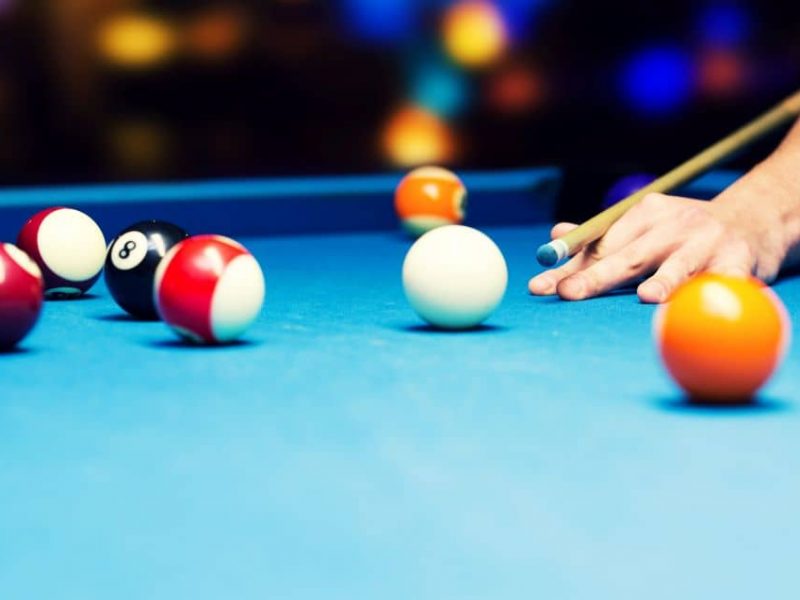
The History of Billiard & Pool Balls
Everything There is to Know About Pool Balls.
The game of pool has a long yet interesting history. Kings and the general population have played the game throughout the years, along with presidents, politicians, ladies, and gentlemen. It was once a game treated the same way as croquet during the 15th century, specifically in Northern Europe.
After some time, the game moved indoors. There was a wooden table with a green cloth on top of it, which symbolised grass. The edges were bordered to keep the balls on the table. Playing pool back then involved shoving the balls – not struck with a stick like it is today. Wooden sticks were used, which were called maces.
Pool was once considered a noble game as it was mainly played by royalty and people of nobility, as they were wealthy enough to afford the equipment at the time. The tables during this time were originally framed by flat walls, which were used as rails. These rails served a way to prevent the balls from falling off the table.
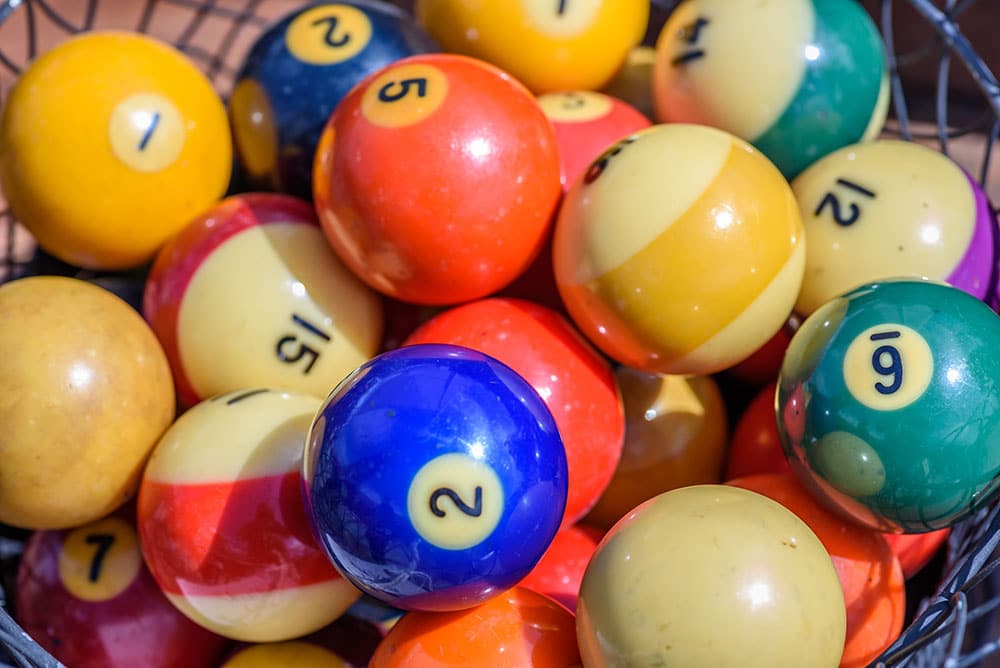
Even with the rails though, the players soon learned that balls could bounce off. As a result, they began to aim at them on purpose. It was then that the bank shot started to develop, where a ball is deliberately made to rebound as part of the shot.
As you can see, playing the game of pool isn’t the only fun part as learning about its rich history can be as well, but did you know that the pool balls themselves have a remarkable past as well?
How It All Started
Everyone knows what pool balls are. They have a distinct look and cannot be mistaken for a basketball or any type of ball in the world of sports. These pool balls are small and hard with numbers and different colours. They can have a variety of pattern and diameter, too.
Over the years, the players and experts discovered that their hardness plays an important role in the ball’s accuracy. Resilience and friction coefficient are significant as well.
The balls themselves have gone through numerous changes due to progressing technologies, particularly jumping from one material to the next. At the start, pool balls were made of wood. You can just imagine how different they would be compared to what we have today. However, during those years, wood was an inexpensive material to produce and use. Therefore, it was the choice of the manufacturers, although the players did not truly have a say in it.
Clay was later used and remained until the 20th century. Although some balls were made of clay, there was another material that most of the players and pros liked better.
In the 17th century, the Europeans started to colonise other continents namely, Asia and Africa. It was then that these Europeans saw the beauty of exotic materials that came from these places. They grew to love the beauty of ivory, which came from elephant tusks.
The tusks were once a symbol of wealth and standing. It was why only the royals and upper classes could use them due to their hefty price tag. The material was highly sought after and was utilised to make walking sticks, piano keys, and – of course, you guessed it right – pool balls.
Because of the material they were made of, the balls were even nicknamed “ivories” themselves. The finished product was stunning, exuding more elegance and exclusivity than wooden pool balls.
Ivory would be an extremely controversial material if it were used on pool balls today. However, during the 17th century, it was not an issue at all. There were not a lot of environmental and conservation concerns at that time, which was why no one tried to look for an alternative – at least during that particular period.
Ivories were deemed glorious, coming only from the tusks of Asian elephants. There was no better natural material that had everything that should be in a pool ball. The manufacturers saw a variety of traits in ivories that they could not find anywhere else. These traits included:
- Physical size
- Beauty
- Strength
- Durability
For a long time, the elephant ivory was the material of choice for pool balls. Unfortunately, mass markets in many parts of the world, including the western countries, used too much of the material. Ivories were not only utilised for pool balls but also commercial trinkets, combs, and piano keys as mentioned above.
In the late 19th and 20th centuries, wild elephants were under serious threat that could make them go extinct. While it is true that one African elephant’s tusk could allow the production of hundreds of piano keys, the same thing cannot be said with a pool ball. It was discovered that the manufacturers could only have approximately four to five quality balls. These balls come from the tusk of different elephant species, especially:
- Ceylonese
- Indo-Chinese
- Indian
The raw tusks would be delivered to shops in US cities, primarily in Chicago and New York. From there, professional ivory turners would craft the huge raw blocks of ivory and reduce them into gleaming spheres.
However, believe it or not, the hunting of elephants and taking their tusks were stopped not because of environmental complaints and issues. It was more on the problem with the costs.
The synthetic materials of today attempt to imitate the performance, feel and authenticity of ivory balls of the past. They may no longer be produced these days, but you can still find them as part of the Smithsonian Institute and other collections that date back to 1925.
The Search for New Pool Balls
Ivory pool balls were made from the 17th century, although there were still ivories in 1875 until 1920. However, in 1869, manufacturers started looking for an alternative option. After all, ivory was not a cheap material to work with. Phelan and Collender, a pool table making company decided to offer a reward to any person who could create a pool ball that did not use ivory. An inventor from Albany, New York named John Wesley Hyatt wanted the $10,000 (equivalent to $26,850 in Australia today) reward but his entry stood out.
So what did he do? He combined three materials: camphor, nitrocellulose, and alcohol. Then, he moulded the mixture until he had a spherical shape that resembled the ivory balls. He used extreme pressure to achieve the desired shape. Although his finished product did not win him the money, it paved the way for the creation of synthetic plastics
Think about it; without the game of pool, plastic would probably never exist today. The growth of the pool game made it possible for plastic to be discovered through the “celluloid” balls, as Hyatt called it.
As the years progressed, Hyatt tried to make a better version of his invention. However, they all remained a poor substitute. The main problem was the durability of the new balls. Additionally, the material, which was nitrocellulose, was not stable enough. You may have heard about exploding balls, which may have been a myth to you but they were real.
According to Hyatt, if two balls hit each other, the collision would produce an explosion. Although mild, it did resemble a percussion cap gun. It did not bother some people. Usually, at the beginning of the game, some men would pull their guns out, thinking there was a commotion. Add to that, the material was flammable.
Nevertheless, the world is grateful to Hyatt. Although his celluloid balls did not replace the ivory balls, they inspired other manufacturers to make new types of plastic. Petroleum-based plastic was invented in 1907, which was named Bakelite after the creator, Leo Baekeland who was an American chemist. It was later found that it was the perfect plastic for pool balls.
Phenolic Resins and Their Role in Pool Ball History
It was half a century later when Bakelite was created. It was a type of phenolic resin, which we know as the material that most pool balls are made with today. Bakelite has plenty of advantages, but there are five main reasons why it is now the preferred material:
- It is extremely resistant to heat
- It is a much cheaper alternative to ivory and other materials
- It can be moulded into the perfect spherical shape for the pool balls
- Bakelite can resist impact
- The balls made of Bakelite are easy to clean and maintain
In 1923, Saluc SA was founded in Belgium. This company is a specialty manufacturer but has come to be recognised as the name behind the Aramith brand. Saluc SA is an important part of pool ball history. Aramith is a pool ball brand that specialises in phenolic resin balls. This material, as you already know, is the best option since celluloid.
But what exactly is phenolic resin? It uses a phenol base, which is also called carbolic acid. Phenol is an organic compound that looks like white crystalline. Although solid, the material is volatile and mildly acidic. Therefore, it needs to be handled carefully; otherwise, it can burn an unknowledgeable person.
Originally, phenol came from coal tar. However, the advances in technology allowed the discovery of other means of extraction. It is now produced from petroleum.
You may be familiar with phenolic resins as the material used in creating circuit boards. For those who love playing pool, it is a widely accepted material for producing moulded pool balls. Aramith once stated that the phenolic balls are so sturdy that they can last up to five times more than other balls. Aside from Aramith, there are other materials used, including polyester or polymers.
According to tests, Aramith balls can withstand more than 400,000 hits. On the other hand, balls made of other materials rarely last this long.
Other Types of Plastics
As time and technology has progressed, various types of new plastics have been introduced, one of the most prominent being polyester. There are balls made of this material today, used along with clear acrylic and other resins. Different industries may argue that these materials are sturdy enough for pool balls. It is why they are used to manufacture and construct balls for enthusiasts.
However, they are most suited for those who simply play for fun. If you will play professionally or at least competitively, you will not appreciate these types of balls. Unlike phenolic resins, the other plastics do not have the same balance. Also, they are not as durable. They usually have a shorter lifespan and will soon be rendered unusable if you keep playing with them. They are recommended for infrequent plays and casual use.
It is not to say though that these materials are not efficient and effective. The way the materials are handled right from the start of the manufacturing process is extremely significant. There should be quality control when using other plastics.
Plastics like acrylic and polyester are often considered as inferior materials. They are, however, quite affordable. Nevertheless, Aramith remains the standard of reference when it comes to the market of pool balls. In any tournament, only high-quality balls should be used.
If you take a closer look at a pool ball, you will discover that it is a completely solid object. In the case of Aramith balls, the numbers and colours are not superficial unlike with the other plastics. These elements are integrated into the construction of the ball itself.
Interesting Facts about Pool and Pool Balls
When you say the word pool, some people would think you are talking about a swimming pool. However, these two have nothing to do with each other. The word pool comes from the French word “poule” that means “hen.” However, the term implies the ante or collective prize after winning a bet. Other games that have nothing to do with billiards (poker, for instance) involve a pool. Still, only pocket billiards became attached to the word “pool.”
An interesting fact is that pool rooms are now used to refer to areas where you play pool. However, in the 19th century, pool rooms were a betting parlour where horse racing enthusiasts would place their bets. At that time, patrons needed to pass time, so pool tables were installed in each room. The two became interlaced with each other in the mind of the public.
As time passed, pool, balls, and tables eventually evolved. Some of the ways they changed include:
- English BilliardsThis was the dominant game in Britain from 1770 to the early 1920s. It was a game where there were only three balls. The rectangular table used had six pockets. Today, this traditional game is mainly associated with “snooker.” It is a complex yet colourful game with both defensive and offensive tactics. However, instead of three balls, there are 22 balls involved.
- American Four-Ball BilliardsIn the US, this game was prominent until the 1870s. There was a four-pocket table, which was at least 335 cm. This game had four billiard balls with two white and the other two, red. It is seen as a direct extension of the English Billiards. To score, players would need to pocket the balls, scratch the cue ball, or make caroms on two to three balls.
- Carom BilliardsIt is an act of hitting two balls using the cue ball in just one stroke. In the American Four-Ball, there were different ways to score using carom. It was possible to have 13 points with just one shot.In the 1870s, two games stemmed from the American Four-Ball, which surpassed its popularity. One of which was mainly comprised of playing simple caroms using three balls. The table used had no pockets and was called the straight rail. It was where all carom games started.
- Fifteen-Ball PoolAs the name suggests, had 15 balls. Sinking a ball gave the player a certain number of points based on the value of the ball. All in all, the points totalled 120. Whoever got more than half of the total first (61+) would be declared the winner. You may know this game as the “61 Pool,” which was the game used in the first-ever championship pool tournament in America back in 1878. A Canadian named Cyrille Dion won the game.In 1888, the game rules changed. Instead of counting the points based on the number, the points were awarded based on the number of balls pocketed. It is when Continuous Pool took over Fifteen Ball Pool, which turned into the main championship game. The name Continuous came from the way the game is played. The player who shoots the last ball of the rack will break the next rack. The total points would be kept (continuous) from one rack to another.
- Other gamesAfter the 1900s, the Eight-Ball was invented. Straight Pool followed 10 years later while the Nine-Ball is believed to have started around 1920.
When buying pool balls, the brand name is important for one reason: reliability. Hardness, resilience, and friction coefficient are all the essentials in gameplay. You should always look for a quality set. Aramith is usually the first choice, although there are other respected brand names as well, such as Sterling and Elephant.
However, Aramith is the only producer of pure phenolic resin, which is the material of choice if you want balls that last longer and are resistant to moisture, heat, impact, and chemicals.
